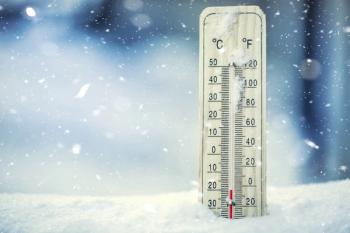
Hospital at Home Models Can Improve Care Delivery and Reduce Unnecessary ED Care
Providing advanced home care can help reduce hospital admissions for the elderly, but these programs aren’t easy to get up and running, according to panelists at the spring 2018 conference of the National Association of ACOs.
Providing advanced home care can help reduce hospital admissions for the elderly, but these programs aren’t easy to get up and running, according to panelists at the spring 2018 conference of the National Association of ACOs.
Eliza “Pippa” Shulman, DO, MPH, senior chief innovation engineer at the Atrius Health Innovation Center, explained that how the practice responds to a patient dictates the care going forward. For instance, if an elderly woman with chronic obstructive pulmonary disease calls because she doesn’t feel well, but the medical secretary can’t find an appointment, that patient will likely end up in the emergency department (ED) instead of waiting.
An immediate response and action can change a patient’s medical trajectory, she said. On that call, the patient should be asked if she wants to come in right away or if someone should come out to her house.
“Responding right away and responding with a solution that makes sense for the patient is critical,” Shulman said.
The advanced home care that Atrius provides offers patients the option of going into the hospital when they need the care or having the hospital brought to their home.
“Hospitals are great for certain specialized care,” she said, “but so much of this can be pushed into the home.”
Mark Prather, MD, MBA, of DispatchHealth, highlighted the issues with ED use and that billions of dollars are wasted in unnecessary care. Prather, who was an emergency medicine specialist, explained that emergency physicians always thought that the recidivism rate of EDs was about 7%, but there are new data to show that it is closer to 20%.
DispatchHealth is a technology company as much as it is a care delivery company, Prather said. It sends a mobile ED out into the community with trained providers who are equipped to treat anything an urgent care center would be able to and even has diagnostic capabilities.
From the moment he started working on the hospital at home model, Prather recognized that it would be a difficult model to scale. The challenge is that patient acquisition is always going to be a challenge. The problem is that the emergency physician doesn’t think to send the patient outside the hospital for discharge; instead, he or she instinctively sends the patients into the hospital.
Mount Sinai’s Hospital at Home Plus has the advantage of being attached to a hospital, so most of its patients are admitted to the hospital at home program through the ED, explained Linda DeCherrie, clinical director of the Mobile Acute Care Team in Mount Sinai's Hospital at Home Program. However, about 15% do come directly from home or the primary care physician’s office. The main goal, though, is to not disrupt the usual ED flow.
“We don’t want anyone in the emergency department to do anything different, because I think that’s a really hard culture to change, and I don’t think it has to change necessarily,” DeCherrie said.
The program has found that the average length of stay is 3.5 days, which is slightly shorter than that of patients going into the hospital’s ED. The program offers 24/7 support, can send paramedics or urgent care providers to the home, and checks in on the patient as needed. In addition, after “discharge,” the program follows the patient for 30 days and continues to look after them with a nurse coordinator. The program can provide care if needed, but the goal is to re-engage the primary care physician after the acute visit while the hospital at home program remains back-up.
Newsletter
Stay ahead of policy, cost, and value—subscribe to AJMC for expert insights at the intersection of clinical care and health economics.







































